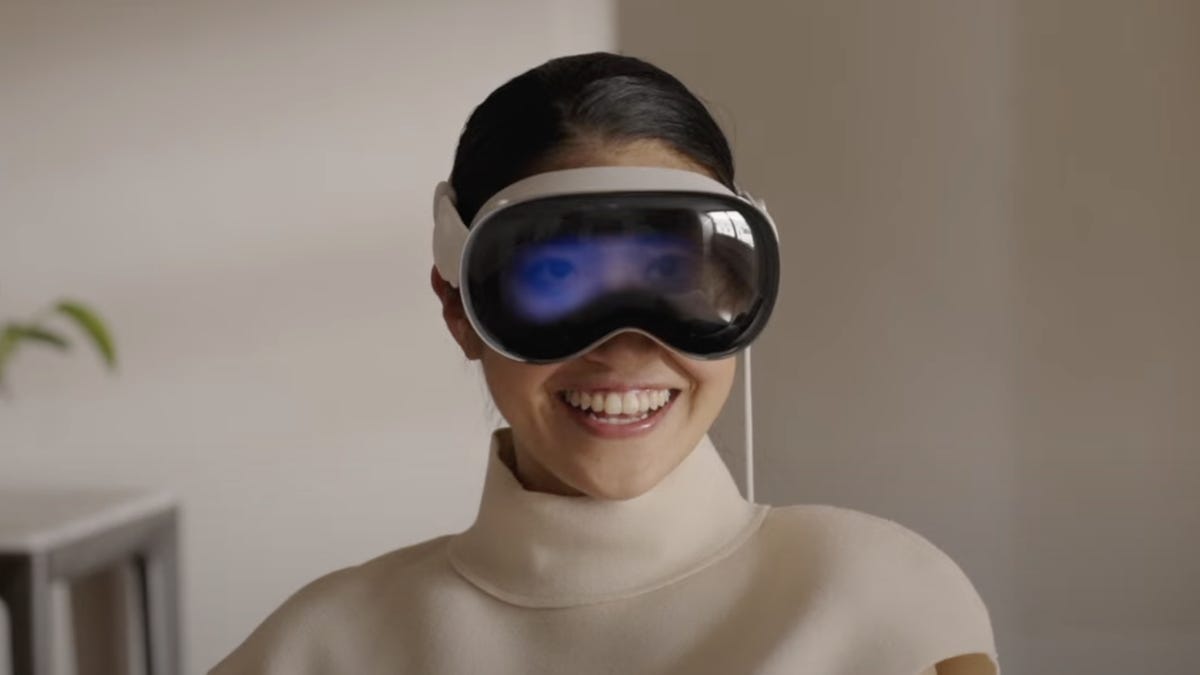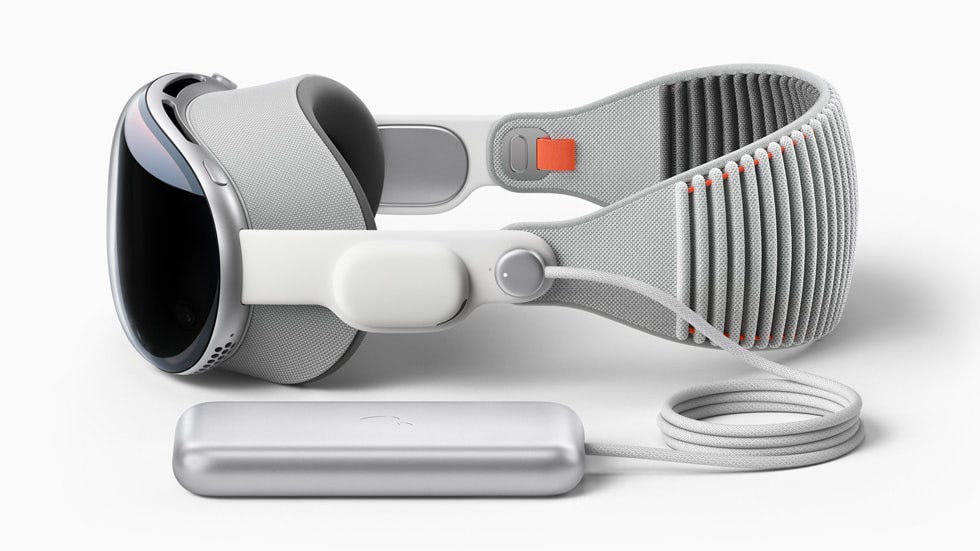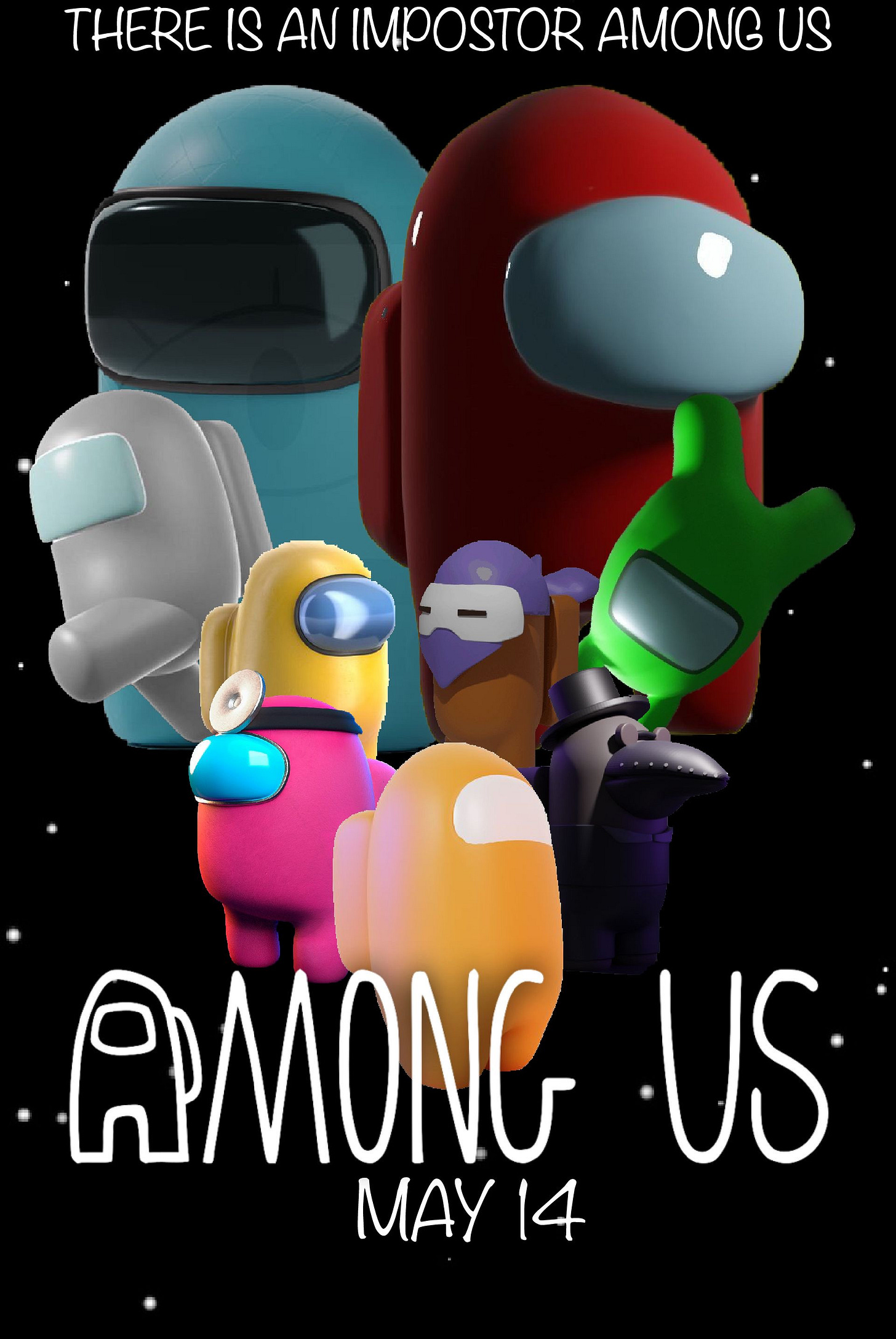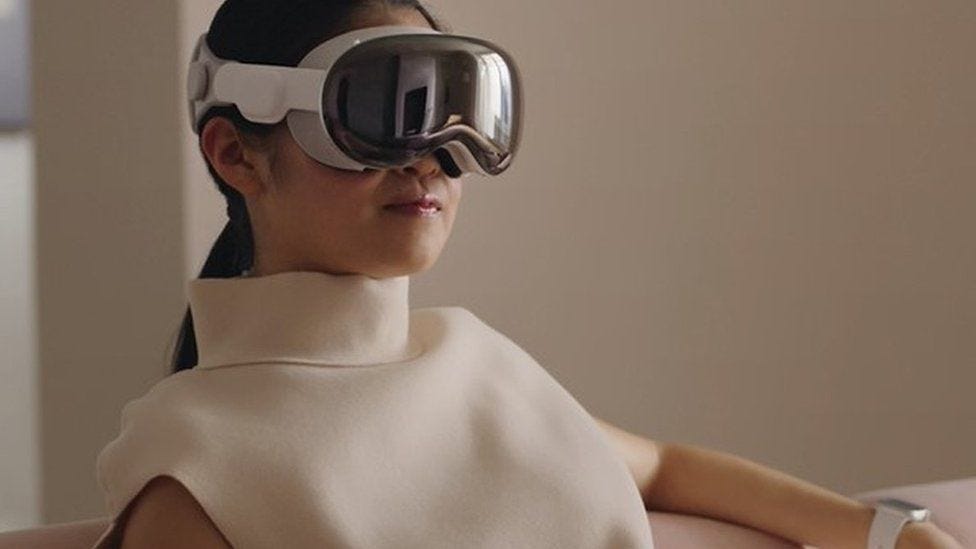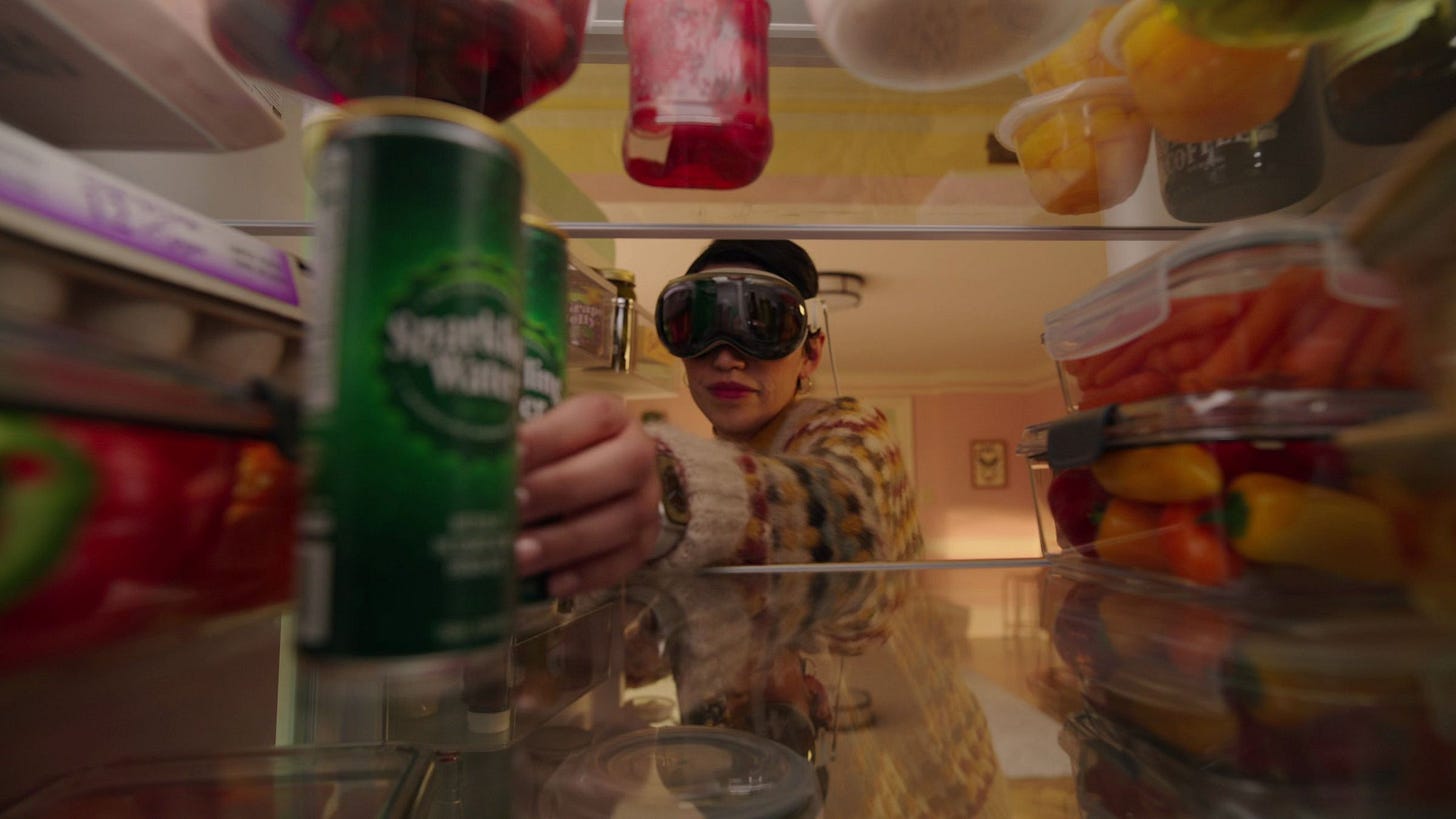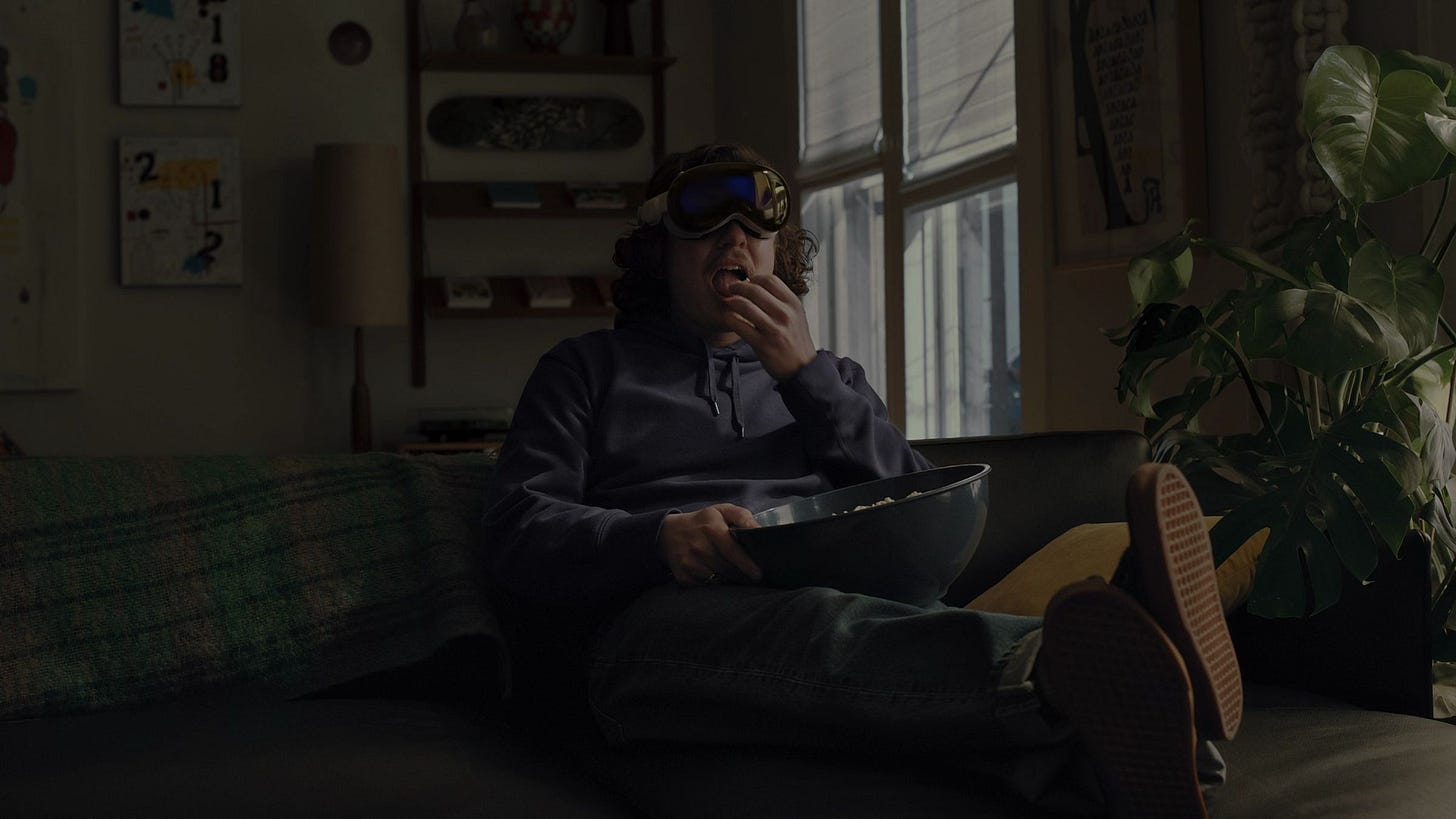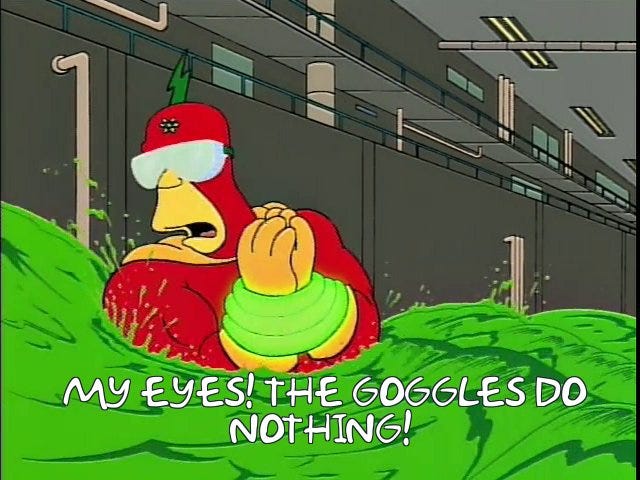Hello,
I’m back! Rebooted like that 5th season of Arrested Development nobody wanted and fewer people watched.
Oh my goodness gracious me, have I been busy. I won’t bore you with the exciting details here - instead, I’ll offer you the chance to see what we’ve been working on.
If you’re intrigued by the first digital marketing simulation we’re building at Novela (it’s for search marketing), you’ve got two options:
Respond to this email. I can send more details and set up a meeting, if you’d like!
Click below and select a suitable time for a live demo:
I don’t want to build it up too much, but it’s better than 10 Super Bowls.
That New Apple Headset, Vision Pro
Yes, Apple finally announced that they’re launching a mixed reality headset. I’m just glad they finally did it so “thought leaders” can stop arguing over whether Apple would seriously ever do such a thing.
The headlines about Apple’s new headset are as follows:
$3,499
(You could buy over 6,000 real apples for that. In fact, I’m doing this at the price of individual apples in a supermarket. Go to the source and you could get well over 10,000 orbs of crunchy deliciousness instead of looking like a monumental berk in a cyber ski-mask. Just saying.)
(You could get laser eye surgery for that money. And then, instead of paying money to live inside your laptop, you’d be able to spot people wearing these headsets from many miles away so you could swerve them altogether and go to the park instead.)
(The sad irony, the pippy paradox in all of this, is that I’d need to rob a bank to buy a Vision Pro. But I can only rob the bank effectively using my Vision Pro for protection. So I need to buy the Vision Pro first, but to do that I need to rob the bank…)
Released early 2024
It’ll have its own operating system, VisionOS. It uses M2 processors but they’ve developed a bespoke chip to support the functions delivered through the headset.
Disney+ is on board to create new content for Vision Pro’s launch.
It has an insane feature called Eyesight. This lets users “reveal” their eyes to other people in a room.
We’re led to believe this is a “seamless” blend of the digital and physical worlds. Dunno about you, but I can see the seams.
It has two ultra HD screens - one per eye.
(What happened to the days when we thought screen time was bad for our eyes, eh? In the 90s, we thought screentime was the modern-day smallpox. Now we’re supposed to strap the screens to our heads?)
From the press release: “A twist of a Digital Crown lets a user control how present or immersed they are in an environment.” “Crown”
It only runs for two hours on a single charge.
You probably know what I think of this one, if you can remember how I used to write.
First, I’ll make fun of it. I already started above, but there’s a little more gas to pour on this fire yet.
It may seem flippant (and fun) to mock the appearance of the headset. In truth, you’re free to spend $3,499 of real money to look like an extra off the Among Us movie if you like.
I do like to draw my historical analogies and the past would tell us that technology is not just about functionality. In the 18th century, people made sure to show off their new-fangled “watches” and “personal clocks” in their portraits. These were status symbols; they said something about the owner. They were punctual, sure, but sophisticated too.
Our consumption is conspicuous.
Google Glass actually sort of made sense, but it wasn’t worth being bullied over.
Therefore, I’d now like to separate the design of the Vision Pro from its function.
Why? Well, the design can always change. I even wonder if Apple thinks it’s best to go all-in on the ski goggles look for now to get us accustomed to the very notion of wearing such a thing. It’s then easier to get us wearing AR glasses in future, because by comparison they’ll be socially acceptable.
I’m not saying they purposefully wanted to send their share price down overnight by launching this bulbous appendage, when they have a better design tucked away for later. Nonetheless, it is easier to climb down from this position than it would be to start small and release incremental madnesses.
And so, to the technology. Apple is determined to call this “spatial computing”, and certainly not “the metaverse”. The use cases it proposes are prosaic. This guy’s looking up an Airbnb:
She’s on the couch:
She’s in the fridge:
And he’s just very obviously about to spill popcorn all over his jumper:
Lots of journalists have tried the headset and the uniform opinion is that it’s very impressive. Apple wants to root this technology in everyday use cases, not Zuckerbergian flights of fancy into cartoonish game worlds.
An engineer who was involved in developing the headset took to Twitter to share a very enlightening thread on how it works.
He says:
“A lot of the work I did involved detecting the mental state of users based on data from their body and brain when they were in immersive experiences.
So, a user is in a mixed reality or virtual reality experience, and AI models are trying to predict if you are feeling curious, mind wandering, scared, paying attention, remembering a past experience, or some other cognitive state. And these may be inferred through measurements like eye tracking, electrical activity in the brain, heart beats and rhythms, muscle activity, blood density in the brain, blood pressure, skin conductance etc.”
Aha!
Anyone crazy enough to have followed my work over the years will know I’ve been banging this drum for a long time. All the big tech companies are so desperate to put headsets on us so they can get closer to our real data.
I don’t mean that in a conspiracy theory way. They’re not trying to harvest our brains or control our minds. They want to make lots and lots and lots of money.
I gave a presentation in 2016 where I shared some findings from my research into Google patents. This was one such patent, in which Google would be able to detect biometrics from a user’s reaction to a search ad:
Nice idea (if you like such things), but hard to do. Unless you stick a headset on the user and fill it with detection devices.
The Apple engineer continues:
“Your pupil reacts before you click in part because you expect something will happen after you click. So you can create biofeedback with a user's brain by monitoring their eye behavior, and redesigning the UI in real time to create more of this anticipatory pupil response.”
And:
“Another patent goes into details about using machine learning and signals from the body and brain to predict how focused, or relaxed you are, or how well you are learning. And then updating virtual environments to enhance those states. So, imagine an adaptive immersive environment that helps you learn, or work, or relax by changing what you’re seeing and hearing in the background.”
From a tech company’s perspective, these biometric data points would unlock a whole new source of growth. As we move away from third-party tracking, they are all very keen to get “closer” to their customers. This is another step towards removing “friction” between the physical and digital worlds. Just think of the ad revenues!
These headsets are a crude way of doing this from a design perspective, although they are filled with highly innovative technology. They still ignore some crucial facts that dictate the adoption of a new device, however.
First, let’s be honest: this headset is not cool. And I know cool.
It also sends us further into a screen-driven version of the world, when my Apple laptop and my optician are already warning me I spend too much time looking at screens. This kind of technology should really improve our quality of life, not reduce it.
Still, we’ve been talking about these headsets for long enough now. If Apple can’t make it work, maybe we’ll just leave the idea alone. 🤞





